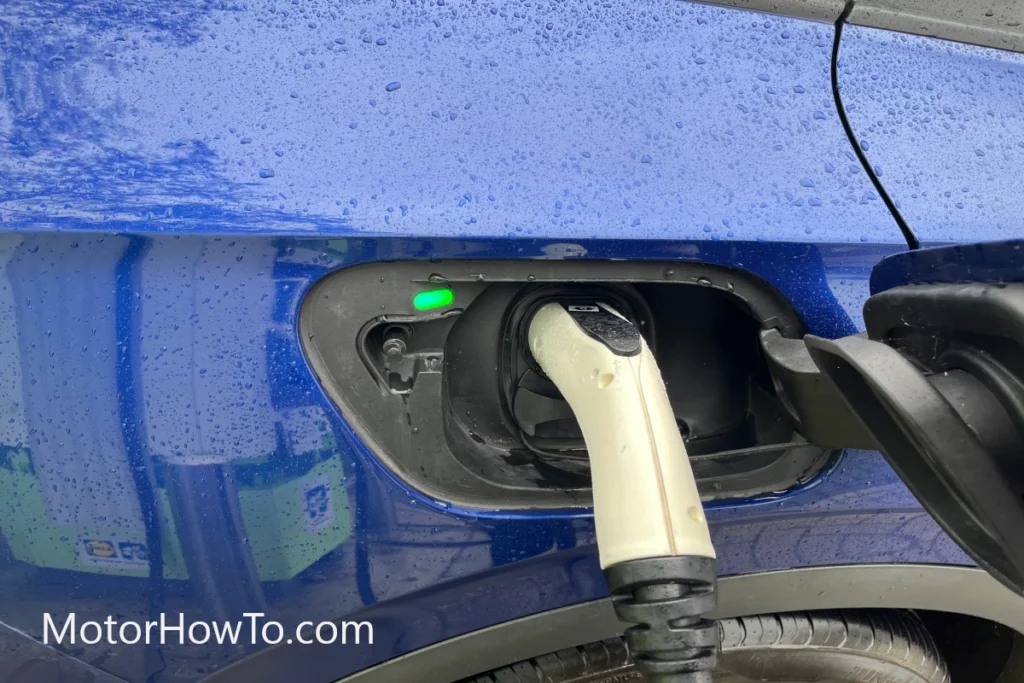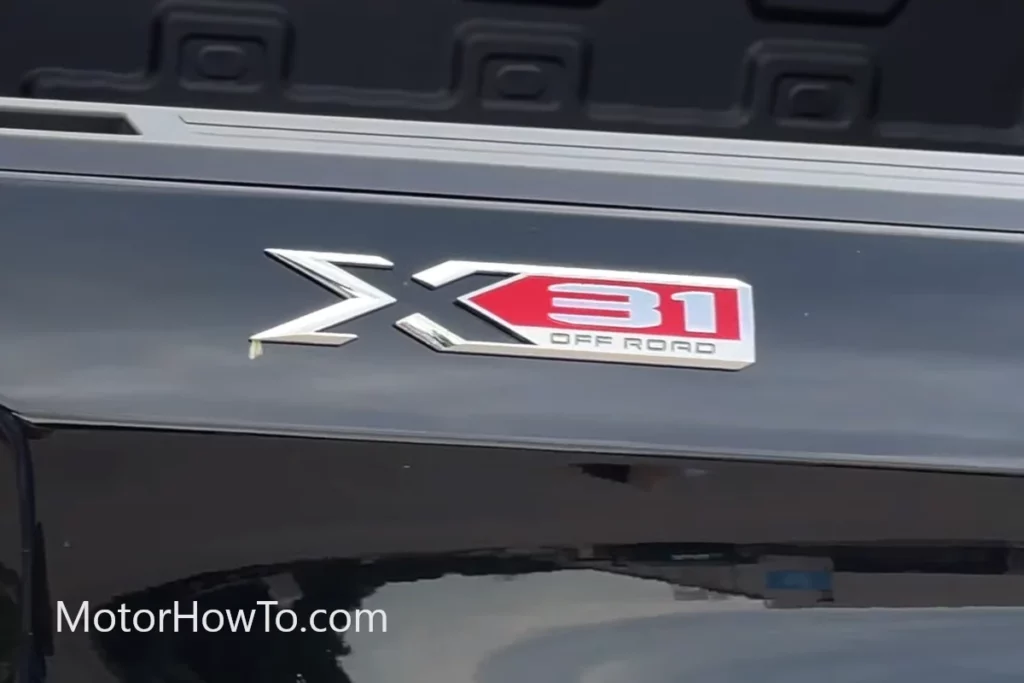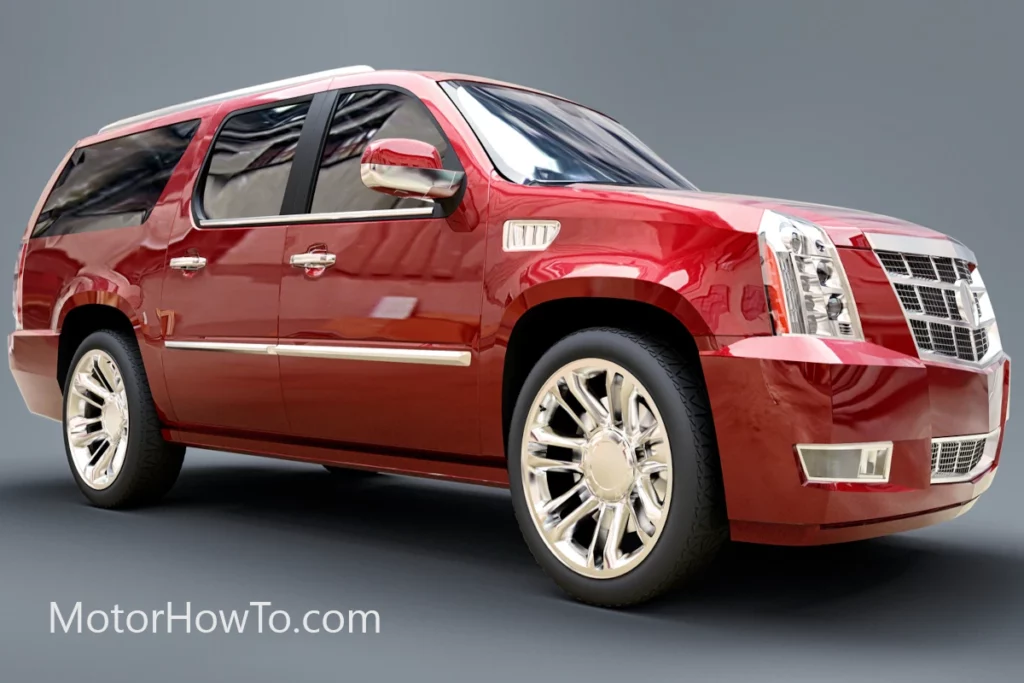Car hood vents have become popular on high-performance cars like la Ferrari, mustang GT500, CTS-V, and many more.
They are the first and most typical thing people see when they drive along the streets because of their central location at the front of the vehicle.
Moreover, they are designed to give a car an excellent and attractive look.
However, most people wonder, other than giving your vehicle a good appearance, do car hood vents work?
Let’s Find Out If Car Hood Vents Work
Yes, car hood vents do work. You can find them on the hood, and they work by eliminating air from the engine bay. You can also locate its openings facing towards the rear of a car, always assisting in pulling the air out of the engine.
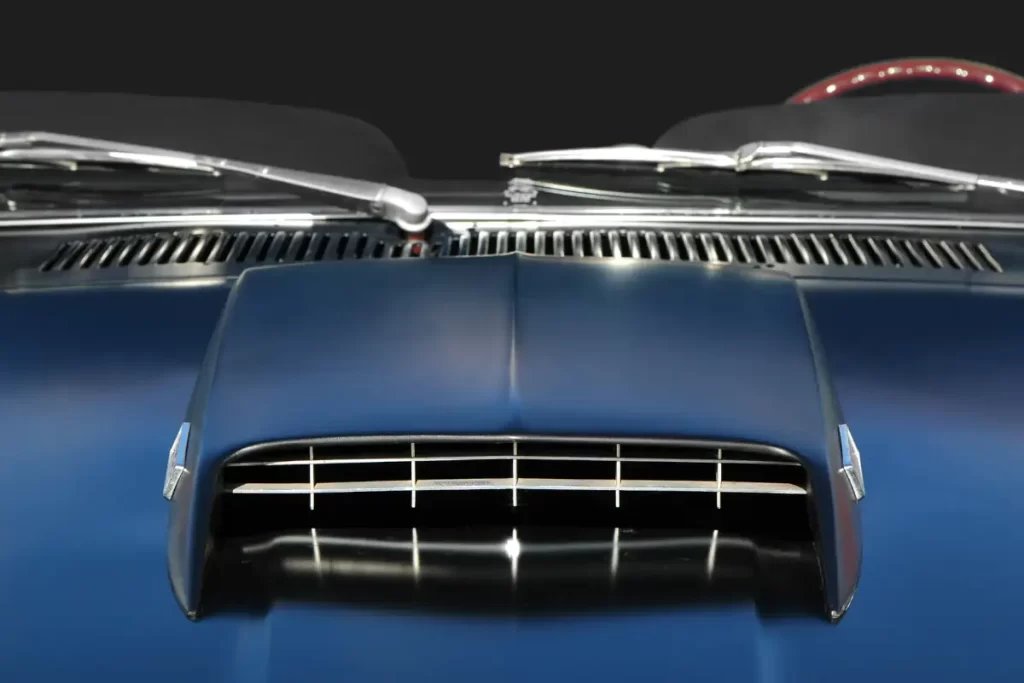
You may wonder why it should pull air from the engine.
Well, here is a good explanation.
Hood vents assist in keeping your engine bay cool. However, they function in other ways than just pulling in cool air.
By removing air from the engine’s bay, hood vents help eliminate heat kept in that same air.
The vents in the hood enable the heated air to disappear faster than when they are not there, which is quite beneficial.
Pulling excess air from your car’s heat exchanges makes the intercoolers and radiators function more efficiently because they work under the principle of convection.
This principle depends on a moving fluid which is air flowing to the intercooler and radiator to be cooled.
Therefore, excess cool air from the heat exchangers implies more heat needs to be pulled out of them, and that’s why a car hood vent comes in.
Though mostly seen on supercars or high-performance cars, car hood vents are essential in cooling everyday cars, even if it’s not that easy.
If you want your radiator to function more efficiently, incorporate more vents on your hood and increase the total area.
Related:
- What Is a Cowl Vent or Intake Vent in a Car? (Explained For Beginners)
- Why Do Cars Have Fake Grills, Fender Vents, Or Exhaust Tips (Answered)
- Do Auto Vent Shades, Visors, Wind Deflectors, Or Rain Guard Work? (Explained)
What Is the Purpose of Car Hood Vents?
The primary purpose of car hood vents is to push air out of the engine bay since warm air can reduce the engine’s performance. In addition, while the temperatures fall and it gets cooler, the car hood vent usually assists in boosting and maximizing your engine’s general performance.
What Are the Different Types of Car Hood Vents?
Below are the different types of car hood vents you can find in the market. Let’s take a look.
1. Shaker Hood Vents
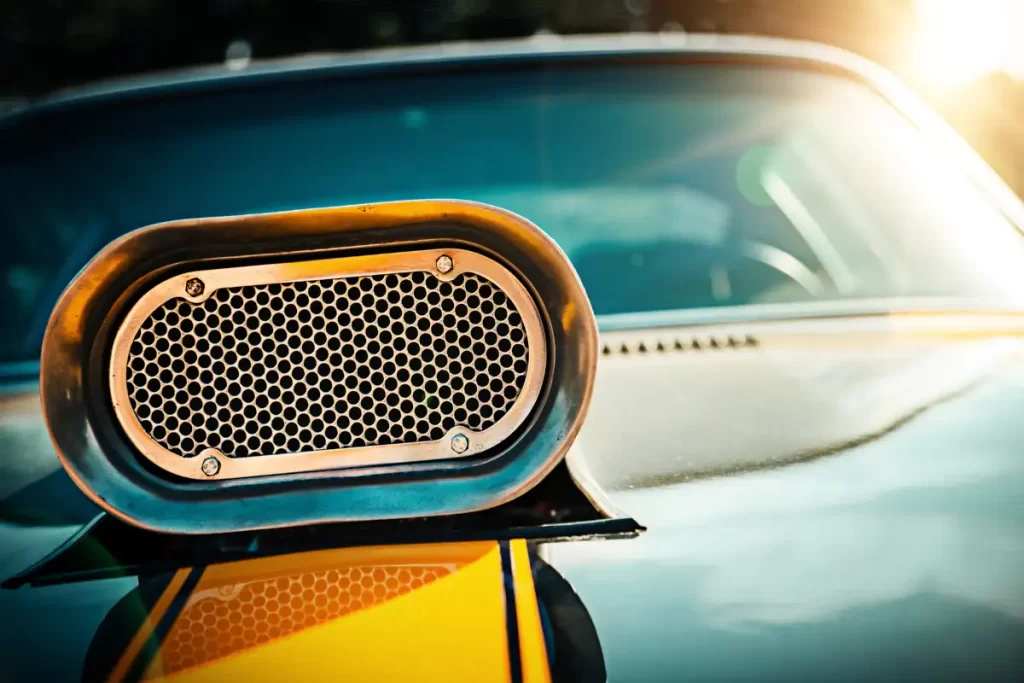
You can usually mount this type of hood vent directly on the engine.
Then it usually projects through a hole in your hood. You will find the shaker hood vents labeled “shaker systems” or “shaker hoods.”
Since you mount them directly to the engine, you will always hear some vibration alongside the engine. That’s why it’s named “shaker.”
You can install them on V8s even though they shake a lot.
The shaker hood vents perform best by trapping cool, dense air, specifically pressurized by the velocity of your vehicle.
They then funnel the cool air into the air filter of the engine.
Although they work well, they tend to be loud and may violate the area’s “nuisance” laws.
2. RAM Air Intake
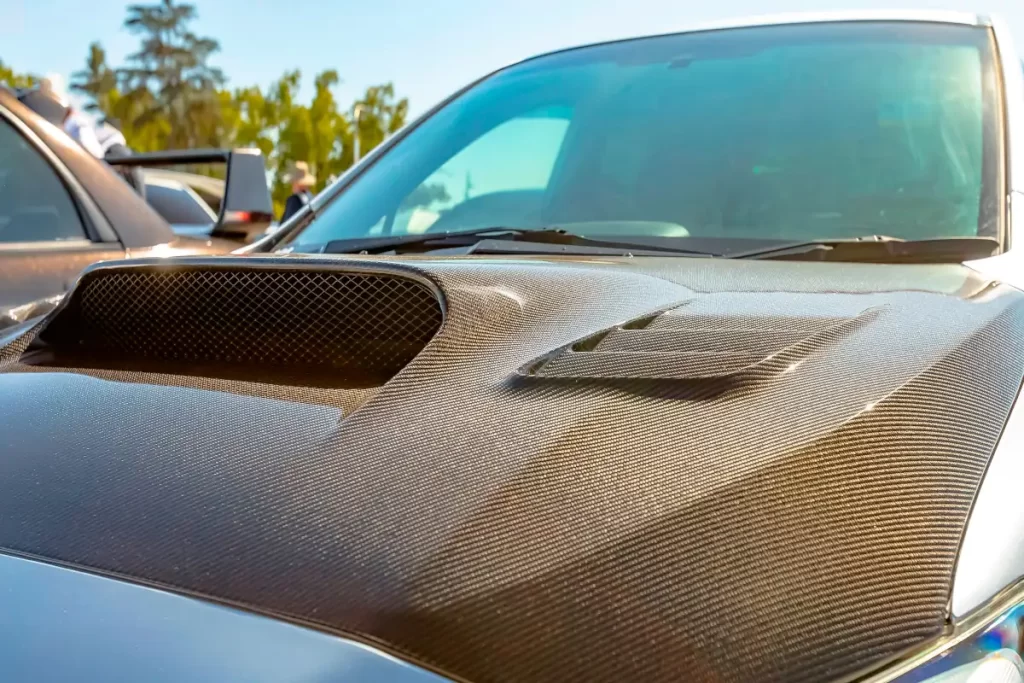
RAM air intake hood vents work best by giving cooler air to your engine bay.
It works as a cold air intake. However, it gives more benefits by changing the pressure of the air generated in the engine. Moreover, this hood vent type usually begins small and expands as it approaches the engine.
Because of that, it forces air to enter immediately and then slowly slow down. Therefore, the slow air eventually surrounds the engine bay while the incoming air flows down on the scoop, increasing pressure. The increase in pressure usually behaves as a supercharger would.
It’s vital to note that a RAM air intake hood vent typically does not work with a carburetor. Mainly carburetors depend on the pressure drop to generate fuel, while the RAM air intake functions best in cars with a fuel injection system. Alternatively, it may work with a carburetor made to function within a pressurized system.
This hood vent type usually gives benefits while at high speeds, and you cannot install them on non-racing mustangs.
3. Intercooler Hood Vents
If you are looking for hoods that are part of the supercharger system and give cooler air to your intercooler, then the intercooler car hood vents are the right choice.
The only thing that distinguishes the intercooler hood vents from other car hood vents is that it does not give any performance boost.
You install it to keep the engine cool, so it does not get damaged by high temperatures. One of the disadvantages of the supercharger system is that it emits additional heat.
However, the intercooler hood vents remove some heat by using the outside air to cool the engine’s air. It also gives additional ventilation to the nearby intercooler.
4. Cowl Induction Hood Vents
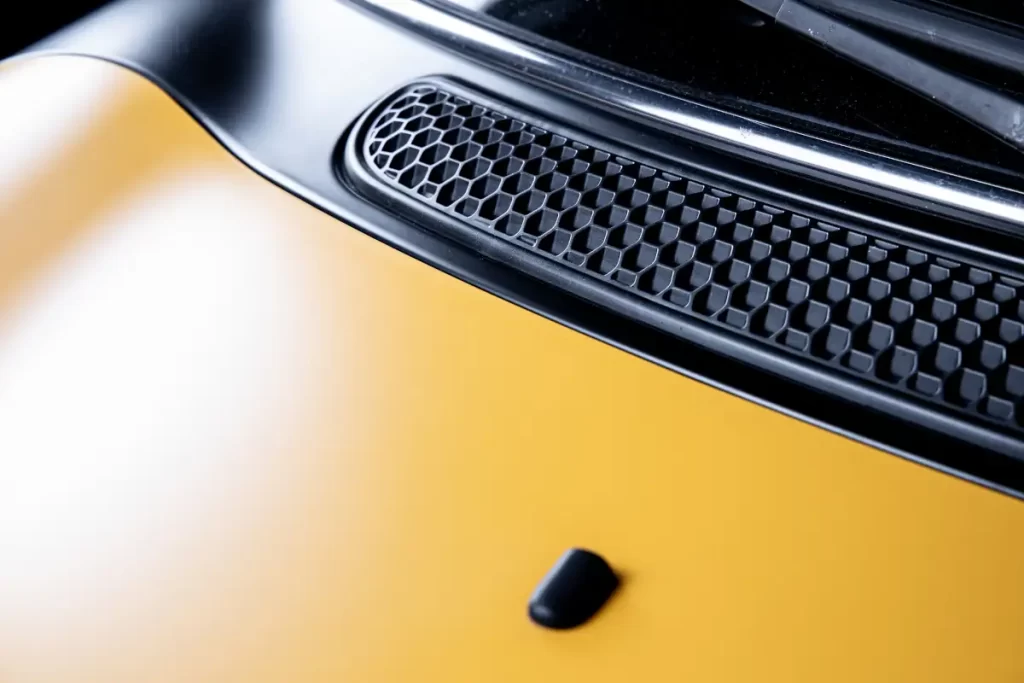
Most people mislabel cowl induction hood vents as non-functional because they tend to avoid seeing their openings. Most car hood vents open at the front, but in the case of this hood vent type, they open while facing your car’s windshield.
The car’s windshield base is an area with high pressure.
Typically, as air strikes the windshield, it is pushed down into the hood vents. Then the hood vents will cool and highly pressurize the air into your vehicle.
The good thing with this car hood vent is that it is not prone to rock damage, even if it’s forward-facing.
Before getting any of these car hood vents, consider the following so that you may settle for the best. Let’s have a look:
- Hood Opening and Closing Mechanics: An excellent standard hood on current vehicles usually have hinges on edges projecting towards the windshield. It also has a latch near the bumper edge center, which holds it in position.
- Hood Shapes: Your car’s shape will help you decide which type of car hood vent to choose.
- Hood Vent Materials: You can find those made from steel, aluminum, fiberglass, and carbon feature. Most people usually prefer steel because of its strength and durability.
- Hood Features: They range from windshield washer nozzle, scoops, hood locks, and hood ornaments to hood pins. So, kindly do your due diligence and select a hood vent that you are comfortable with its features.
Which Car Hood Vents Type Works the Best?
The RAM Air intake usually functions best by giving cold air and, at the same time, altering the high pressures that your engine bay gets. Others that work well include intercooler hood vents and cowl induction hood vents.
What Are the Pros and Cons of Having Car Hood Vents?
The car hood vents are good. They assist your internal engine bay in breathing. They usually absorb air from the front bumper, pass it through the tubes and regulate the temperatures inside the engine bay.
Ensure your scoop is in a high-pressure zone on the car hood for great results. That’s why you will find many car hood vents near a cowl.
Below we explain more pros and cons of having car hood vents. Take a look.
Pros
1. Enhances the Engine Power
The internal combustion engine of many cars usually uses the cool air gathered by car hood vents to increase the engine’s power. Your engine’s bay needs oxygen since the fuel itself may not burn in its absence.
Additionally, the quantity of oxygen required and your engine’s capacity to provide maximum output usually rely on ambient and area static atmospheric pressure.
Typically, cooler and dense air always give excess power compared to thinner and warmer air. Also, every car’s engine compartment is always warm since your engine is closed from each side; hence no accumulated hot air may get out from the enclosure.
Installing channels that provide cooler air to your engine might help to fix such problems.
The incredible air system will cover the power loss created by extremely high-under hood temperatures. That’s why a car hood vent comes in handy to offer cold air to the engine bay and improve its performance by 5%.
2. Gives Intercooler Exposure
Warm air is usually not good for your car and engine. The bonnet’s inside temperature usually increases when your engine operates tirelessly and continuously. Eventually, your engine will end up incorporating hot air inside, reducing your car’s power.
Supercharged and turbocharged engines heat the absorbed air thoroughly, resulting in a hot engine. An intercooler comes in a heat exchanger that draws warm air and reduces the air charge temperature.
However, the intercooler may only operate at its best if cool or cold air repeatedly flows through it. You installed a car hood vent helps to let the intercooler keep getting cool air to operate correctly and regulate the temperatures inside the vent. In turn, your car’s general performance is top-notch.
3. Consumption of RAM Air
The air given by air intake components typically depends on the car’s local atmospheric condition. However, you can increase it artificially by compressing the air.
Usually, the hood vent compresses the air before entering the cylinders. The effect is known as supercharging.
To archive supercharging, you must utilize your car’s motion to push air into the engine bay. It is usually performed under high pressure with a RAM scoop.
Your hood vent usually comes in handy and works as RAM air or operates as a supercharger when your car runs at a higher speed.
The function only happens occasionally, but it’s usually evident in almost all racing cars. Moreover, the RAM hood vent can give a power gain that may reach ten times the conventional power generation.
4. Good Performance
As you can see, car hood vents have numerous benefits and mostly revolve around your car’s performance. A car hood vent is mainly known for improving the engine’s performance by letting cold air move into the engine’s compartment.
Those who use customized car hood vents, it will filter and block dirt, dust, and other harmful elements from entering the engine compartment. By doing this, your engine will function smoothly and have long durability.
5. Enhances the Looks of a Vehicle
Besides giving your excellent engine performance, car hood vents improve the overall appearance of your car too. If you love seeing your car look great, installing a hood vent is the best solution.
Different styles and shapes are available in the market, so take time to find the one that suits your vehicle.
The Cons
1. The Engine Is Suspectable of Rain
Although it is not dangerous if the engine gets wet, you must block the water from getting inside the bay. Mostly if moisture comes in contact with that zone, it usually evaporates before it strikes the hot metal because of the high heat in the engine bay.
Currently, some manufacturers are building umbrellas to pull in the air without moisture to avoid this disadvantage.
2. Dust May Enter the Engine Bay
Although recently manufactured hood vents use filtration to block debris and dust from reaching the engine compartment, it can’t prevent everything.
You will always find something underneath, or some dust might penetrate the engine bay, causing minor problems.
3. Installation May Not Be Easy for Some Cars
Most car hood vents are primarily an aftermarket modification, making it difficult to install in some cars, primarily if the engine is situated in an unusual spot.
Also, you must ensure you have installed them in the correct place since every model and make varies; That’s why it is proper for you to asses and do your due diligence before installing any car hood vent.
Can I Install a Car Hood on My Car? Legal Issue?
Yes, you can install a car hood on your car. You can face the openings forward to direct the cool air into the engine, or you can face them rearward to make use of high pressure at the base of the windshield. Whatever place you decide to position them, the airflow below the hood usually increases.
Here is a process you can follow to install a car hood.
Equipment Required
- Primer paint
- Masking tape
- Tape measure
- Hood cutting tools
- Sealant for gaps
- Drill bits
- Drill
Note: It may not be necessary, but these installation processes are much easier if you remove the hood from the car. If you decide to leave it in place, always ensure caution to prevent damage to the engine compartment.
The Steps
1. Take a measuring tape and locate the exact center of the hood-Mark numerous spots to get a clear picture of where the center is.
2. When you have acquired the correct measurements of the hood, flip it over and locate them. Then put down the location of the mounting holes to develop a template. With the help of cardboard more extensive than the scoop, draw the hood’s outline on the board.
3. Using the measurement you performed from step 2, incorporate at least ½ to the previous measurement.
4. Make a little hole at each corner, then take a drill bit and use it to enlarge the holes.
5. Then make a hole in the hood.
6. With your scoop bolts in place, fix them precisely on the outline of the hood.
7. Recheck all the measurements you made before you drill the mounting holes. Ensure the marks are centered, side to side, and front to back of the hood, not the opening.
8. Make the holes when everything is correct, then take a paintbrush to brush up any exposed metal area using a primer to avoid corrosion.
9. With bolts on scoops, flip your scoop over and cover the flat edges using silicone-based adhesive to remove any gaps.
10. Bring Down the Scoop to the Hood. Place the screws that come in handy with the hood vent and ensure you fix them from underneath the hood. Once you have fixed everything correctly, apply tape to hold the hood in position for some hours for sealants and adhesives to stick better.
Regarding the legal issue, there is no specific law about driving a vehicle with or without a car hood vent. You may find different laws in different states.
Conclusion
You can see that car hood vents do work. That’s why most car owners have them installed as soon as possible. From offering excellent engine performance to giving you attractive car looks, car hood vents remain responsible for numerous benefits.
You can get the best car hood vents and use the guideline provided in this article to install them successfully. Replacing the hood vent takes a few minutes, and you can always look for an expert if you have any problems while installing.
Sources
What is the Procedure to Install a Hood Scoop?

